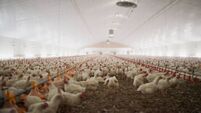Planning good work routine vital during February and March peaks

Teagasc surveys have shown dairy farmers work 12 hours a day on average in February and March, but some work up to 16 hours.
Make a list of all the important tasks to be carried out, and ensure they get priority.
Such tasks include cleaning and disinfecting calf houses and calving boxes, taking precautions against diseases, adequate supervision of calving, keeping good records, etc.
Someone has to take overall responsibility to ensure that nothing is neglected in the spring rush chaos.
Whether family members or hired labour are involved, it is important that every one knows their own role and responsibilities.
Carry a pocket notebook to take notes and reminders of important tasks, and for events recording. For example, the Irish Cattle Breeding Federation (ICBF) notebook is designed for this purpose.
Every effort must be made to reduce labour requirements — such as installing extra milking units, group feeding calves, once-per-day feeding of stronger calves etc.
But if labourers are scarce, help should be hired in. The Farm Relief Services are used by hundreds of our most progressive dairy farmers, and have proved very reliable and excellent value for money.
Providing sufficient labour in spring will improve performance throughout the rest of the year. It gives the farmer time to think and concentrate on management of herd health, feeding, breeding, grassland management, and milk quota, and to discuss these important areas with the vet and Teagasc adviser.










